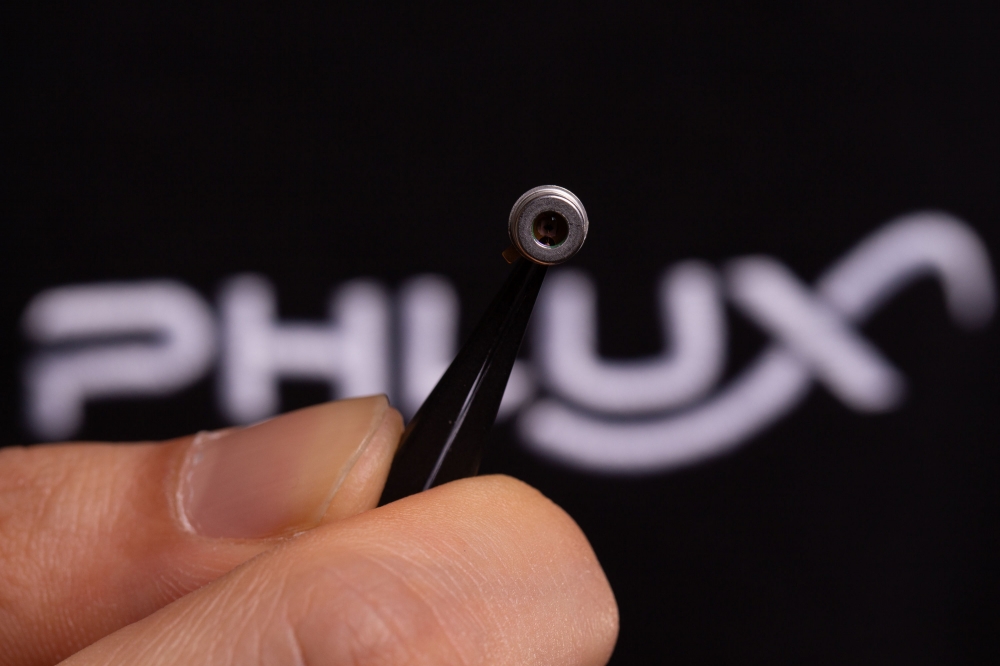Phlux’s 12X more sensitive IR sensors transform LiDAR, rangefinder, and optical fibre test performance

Phlux Technology, a manufacturer of avalanche photodiode (APD) infrared sensors, announces its first products, the Aura family of 1550 nm devices based on the company’s Noiseless InGaAs™ APD technology. The sensors are 12X more sensitive than traditional best-in-class InGaAs APDs. As a result, the operating range of LiDAR, laser rangefinders, and optical fibre test equipment can be extended by up to 50% with Phlux sensors, which are drop-in replacements for existing surface mount or TO-packaged components.
In new designs, the Aura sensors enable 12X greater LiDAR image resolution for a given laser power, up to 30% reduction in system size and weight, and up to 40% lower system costs. The size and cost reductions come from using lower-power lasers and smaller optical apertures without impacting system performance. Also, thermal management is simplified because Aura APDs operate at up to +85 °C without performance degradation, which is a significantly higher temperature than traditional parts.
Phlux CEO, Ben White, said, “Our Noiseless APD technology is a step-function leap in performance and provides tangible benefits for any company involved with 1550 nm lasers. Automotive LiDAR is an exciting application where the move from 905 nm to 1550 nm lasers is accelerating, not least because the latter is “eye-safe”. But there are also huge opportunities for our products in telecommunications, laser rangefinders, imaging, spectroscopy, gas sensing and optical fibre test equipment, particularly optical time domain reflectometers.”
Phlux created its Noiseless InGaAs APD technology through adding an antimony alloy to the compound semiconductor manufacturing process. The resulting sensors can be operated with APD gains up to 120, enabling even the smallest signals above the noise floor of a connected trans-impedance amplifier (TIA) to be amplified. A further benefit of Aura APDs is their rapid overload recovery, which means that weaker secondary pulses that closely follow a large pulse can be detected.
The Aura APD 200 (200 µm optical aperture) and Aura APD 80 (80 µm optical aperture) sensors are available as bare die or in industry-standard SMD, chip on sub-mount, and TO-46 packages designed to meet MIL-STD 883.
Typical parameters for both devices are responsivity of 0.98 A/W at 1550 nm, spectral range of 950 nm to 1700 nm, and excess noise factor of 1.86 at an avalanche gain of 40, or 1.08 at an avalanche gain of 10.
At a gain of 10, the noise equivalent power for the Aura APD 200 diode is 17 fW/Hz0.5, its capacitance 2.4 pF and its cut-off frequency 0.7 GHz. The equivalent figures for the Aura APD 80 are 11.1 fW/Hz0.5, 0.6 pF, and 1.8 GHz.
Both devices have a typical operating voltage of -55 to -65 V and breakdown voltage of -65 V, and their operating temperature range is -40 °C to +85 °C.


































